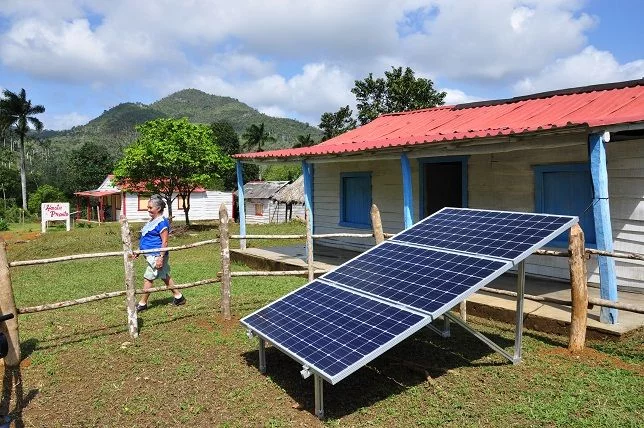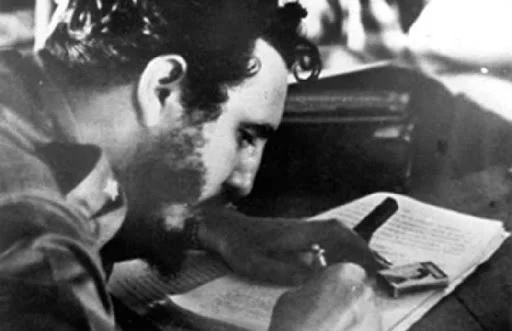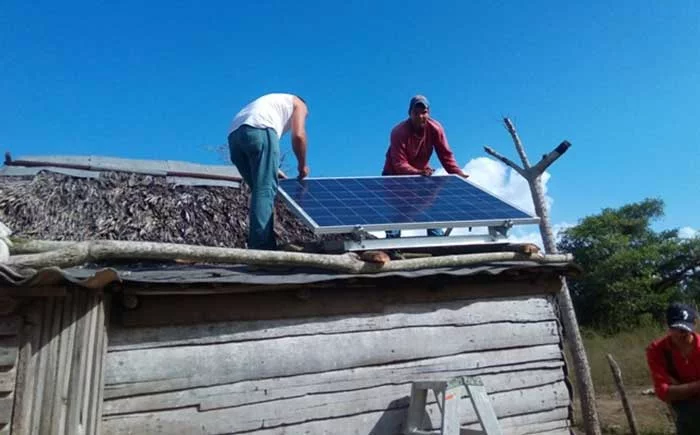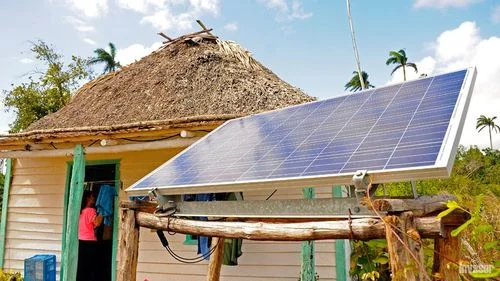
Camagüey, March 21st. – With the triumph of the Cuban Revolution on January 1, 1959, a new chapter in the country's history began. Under Fidel Castro's leadership, the proposals of the Moncada Program began to be implemented, with the goal of improving the quality of life for the most disadvantaged sectors of the population.
One of the first actions was the signing of the Agrarian Reform Law on May 17, 1959, which promoted the distribution of land to those who worked it and the creation of agricultural cooperatives. Measures were also implemented to promote rural electrification, initially through the National Development Commission.

Beginning in 1960, the government assumed full control of the electricity service, directing electrification toward social and economic goals. Since then, significant progress has been made in improving living conditions in rural settlements through the installation of micro-hydroelectric plants and solar panels. The Energy Revolution, promoted by Fidel Castro, strengthened this approach.
Currently, the Camagüey Electric Company is focusing its investment plans and restructuring of the electrical system on the use of renewable energy sources. In several isolated communities, the landscape began to transform since 2021 with the installation of solar energy systems.

The electrification of various rural areas using solar panels has benefited more than two thousand families in remote settlements in this province, the largest and flattest in Cuba.
These are homes that had been unable to access electricity due to their location. This service, subsidized by the Cuban state, allows for the connection of up to five LED lamps, a television, or other equipment that does not exceed the generating capacity of the panel, which includes two batteries that maintain a charge for 14 hours.
This innovative technology can provide up to 250 watts per home, also contributing to the electrification of farms dedicated to agriculture and livestock.
This technology is versatile and can be used year-round, meeting multiple needs with minimal environmental impact. According to data from specialists at the Camagüey Electric Company, Cuba receives solar radiation capable of generating 5 kilowatt-hours per square meter per day.

There's no doubt that solar energy is a virtually inexhaustible resource. Harnessing it through photovoltaic panels allows for significant savings in the use of fossil fuels, while also being effective, economical, and accessible to all.
Among its advantages is its resistance to the island's typical adverse weather conditions, such as strong winds, rain, and hail, which reinforces its potential to increase the production of goods and services for the benefit of society as a whole and achieve higher levels of socioeconomic development. (Maykel Torres La Rosa/Radio Cadena Agramonte) (Photos: Taken from the Internet)